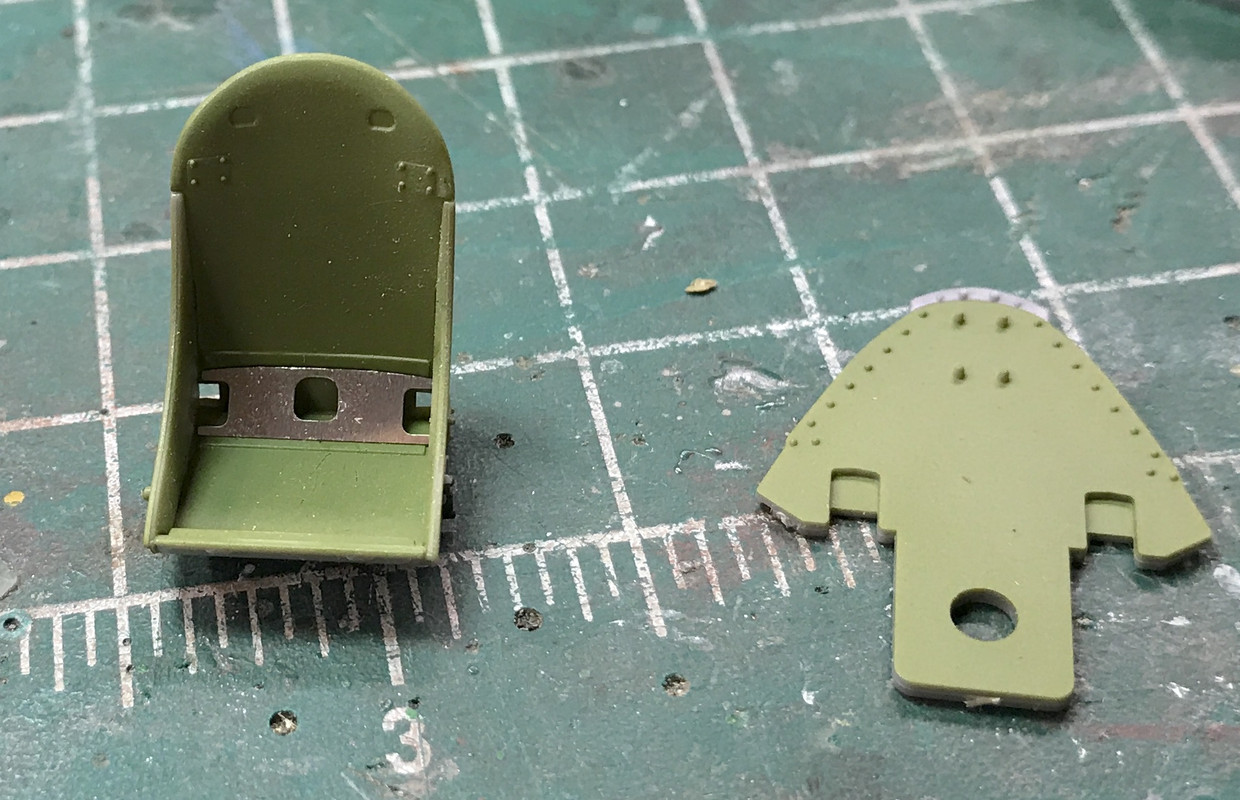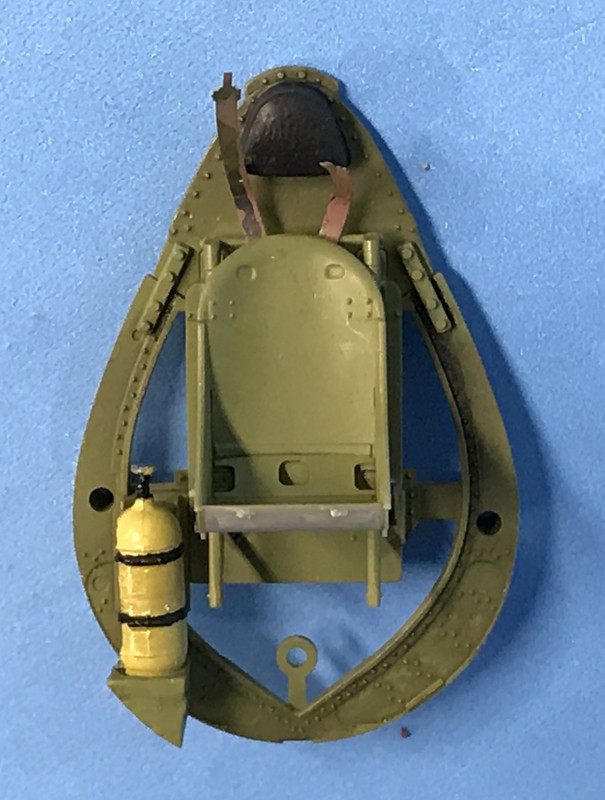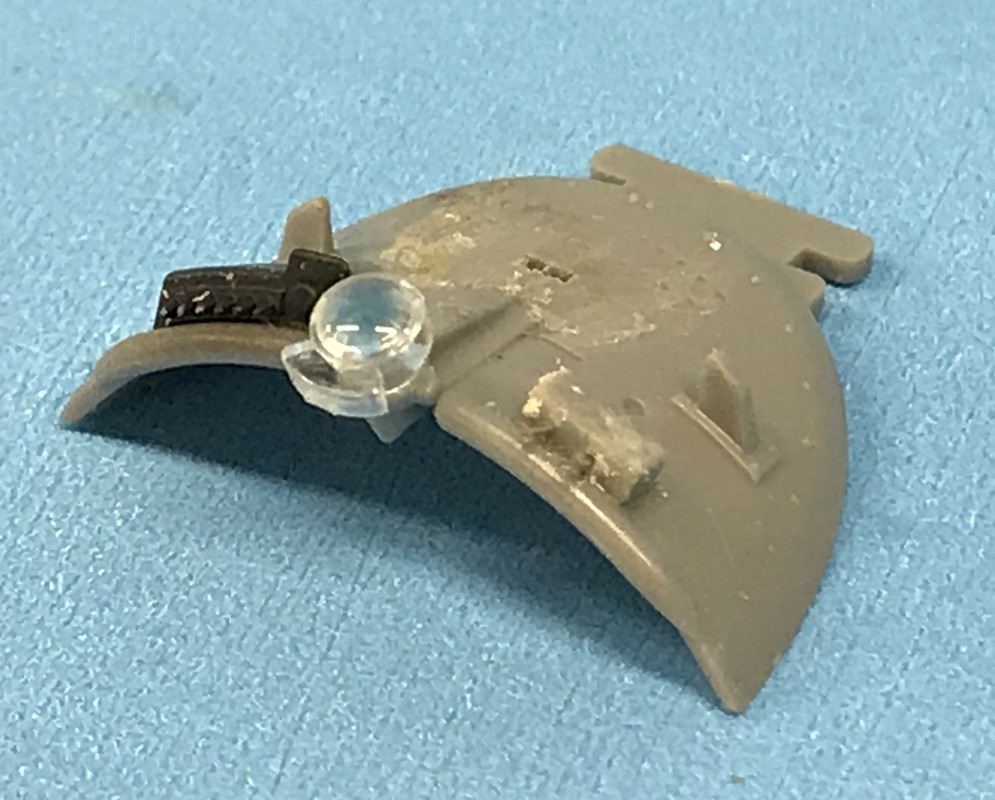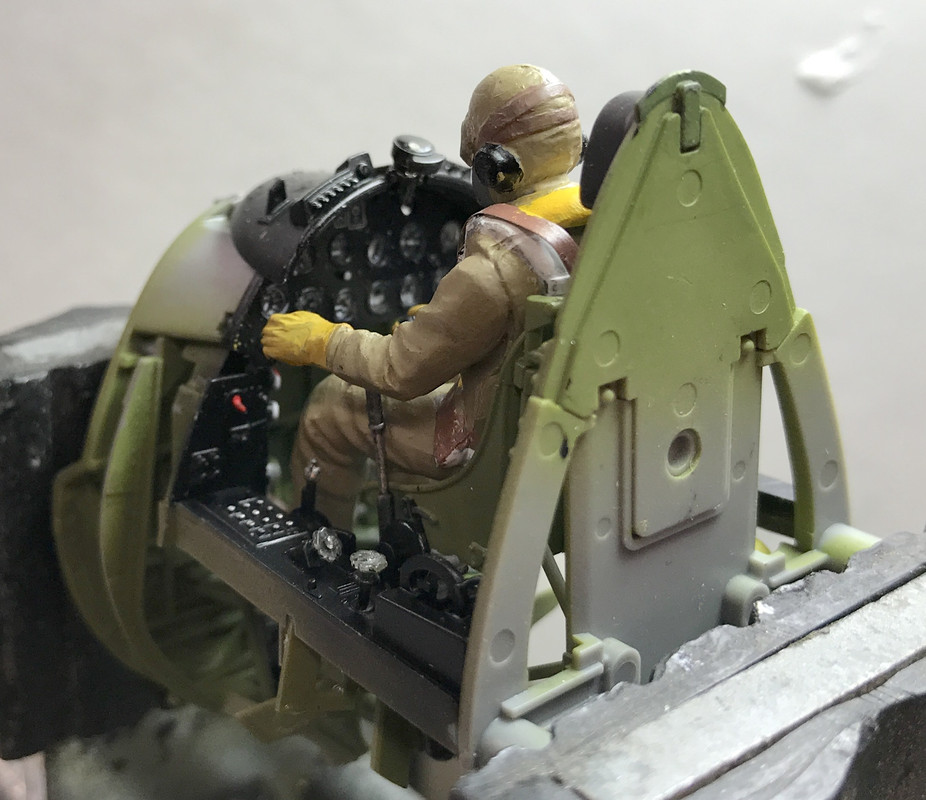Thank you all for the encouragement and good thoughts! I've purchased some Tamiya paints which I suspect, when properly mixed, will give me the shades I need. I've used Vallejo on the Avenger, but don't like how long it takes to fully dry. I use both paints all the time and the work you see here does include mostly Tamiya paint and some Vallejo (flesh mix, white and insignia red).
I finished up what makes up the cockpit today.
It started with building the seat. It's five plastic parts plue one PE. Unfortunately, the PE part is completely hidden with the seated pilot.

I airbrushed all the interior green parts that were included up to this point plus the interior of the fuselage and some other bulkhead parts for the aft of the aircraft. As noted before, the engineering on this kit is exceptional. Where you have fit challenges with Trumpeter, this one is amazing. And being 1:32, you can pick out details that would be almost impossible in smaller scales. Case in point; the skull and cross-bones decal on the pilot's flight helmet, and a decal on the instrument panel.
I glued the seat in place, and painted and installed the oxygen bottle. It called out semi-gloss black, but I painted it zinc-chromate yellow.

The underside of the seat is unpainted, but does not show at all. Getting the PE seat belt to stick using medium and thin CA was a challenge. It is VERY springy material and took more time than I would like to finally get it in place. All of the other PE seat belt material is not used when having a seated pilot. I also didn't put the wash on the seat since, that too, would be occulded by the pilot.
I glued the aft cockpit bulkhead in place trapping the control column and then, using thick CA, glued the pilot in place. Only then did I glue the right arm in place in such a way to grasp the control stick's handle. For this I used standard Testor's tube cement since it has some bulk and would fill any gaps between the arm and the body.
Now I had to get those pesky PE seat belts to join with the molded-on belts, which I now had to repaint from the white of the parachute seat belts to the dark tan of the cockpit seat belts since I didn't realize that some of the molded-in details were seat belts, not parachute belts. This was a wrinkle I wasn't expecting.
The PE parts are probably stainless steel and are very difficult to shape. I tried to pre-bend them so the tension would be reduced a bit so the CA had a chance to hold them in place.
I scraped the paint off the pilot's seat belts so the CA had something to which to hold and then held them in place and hoped for the best. The first belt glued quickly, but the second was a different story. My experience with CA is if it doesn't glue the first time, any further attempts get worse. Each attempt had me scraping the cured CA off the plastic part so I wasn't putting new CA over old CA. Eventually it stuck and I repainted all the distubed areas.

The instrument panel cowling had several small parts that glue to it before attaching to the instrument panel. Out of the five parts needed to be glued, I had two take off to the quantum rift: the little two-toggle panel on the right side and the clear gyro-stablized gun sight optic. Of the two, I finally found the clear part which would have been the worst one to lose, but couldn't find the little switch panel, so I scratch-built it out of piece of sprue and two pieces of high-E guitar string. I used a Xuron hard-wire cutter to cut small pieces of the piano wire, and if I need two pieces, I end up cutting 8 or more since they are microscopic and fly into the rift without warning.

After painting and assembly the panel looks okay. There is a conduit that comes out of a hole in the instrument panel and goes to the bottom of the gun sight that is not included in the kit. I attempted to make it out of a piece of wire insulation. It didn't work, couldn't really be seen, so I scraped the idea.
I used some Microsol Liquid Mask on the gunsight's lens and airbrushed the cowl semi-gloss black, picked out the toggle switches with the Molotow Chrome Pen and then glued it to the cockpit assembly. My source book shows the leather front edge of the cowl to be a brown shade which I may paint tomorrow just to add more intereset.
With the addition of the canopy cowl, the interior is complete and ready to be installed in the fuselage. I notice that I've worn some black off his headphones that needs to be touched up.

The cockpit of this model was the singular most complex and complex cockpit model I've ever built, and believe me, I've built a ton of them. Tamiya is to be congratulated for doing it this way. In later versions of Corsairs, a cockpit floor was installed. It was a real pain when the pilot would drop something in the cockpit and it would end up on the bottom laying on the fuselage skin. It would be most difficult to retrieve something there. Kind of like fishing something out from between a car seat and a console.
Next up: more interior fuselage stuff in preparation for joining the halves. Can't wait to build the engine... I love radials and this one's a beauty.